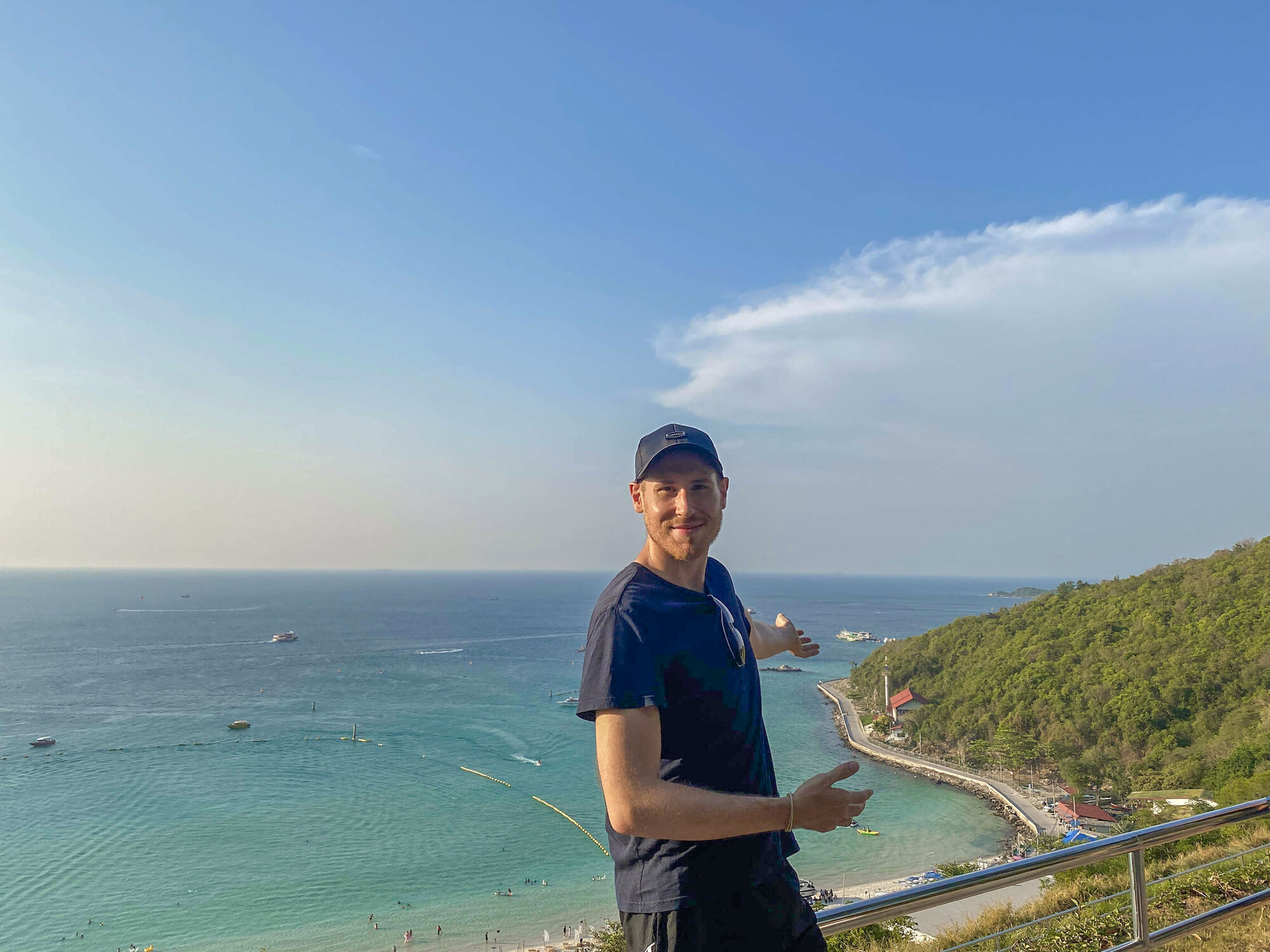The Da Nang Museum is a gateway to the historical heart and cultural soul of Vietnam’s central coast, and it’s definitely one place you don’t want to miss when coming into town.
The museum hosts several exhibitions, showing the history of the city and Da Nang province, as well as the daily life of locals back in the day, and I found it to be one of the most interesting sites in the city.
Planning to visit the Museum of Da Nang City? I did visit it, and this is a comprehensive guide where I’ll go through each floor in detail, countless photos, and all the information you need before coming.
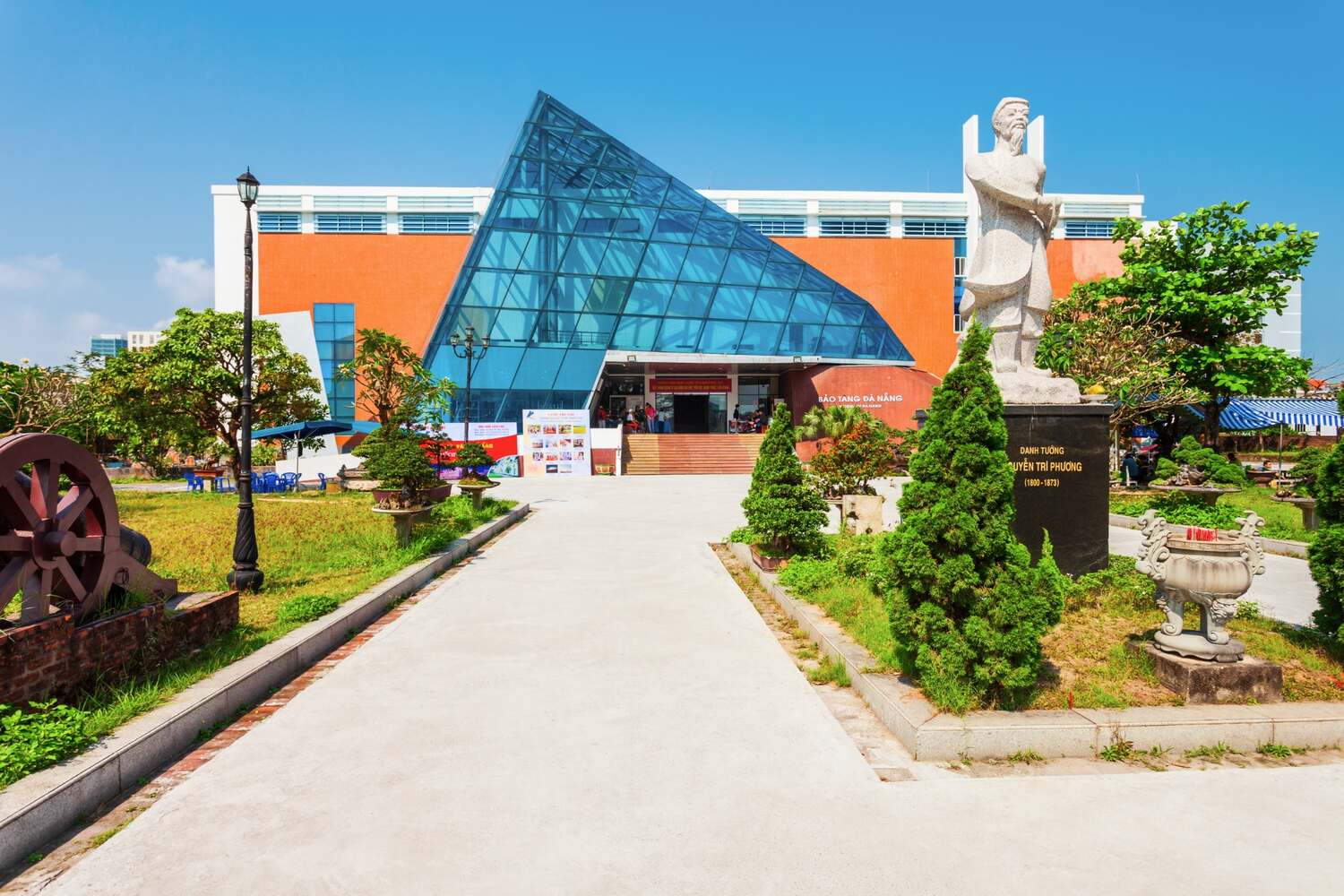
Table of Contents ⬇️
ToggleDa Nang Museum: Summary
Let’s start this guide with all the essentials you should know about the museum, from its location to getting there and more.
Where is Da Nang Museum?
Da Nang Museum is located in the heart of Da Nang city center, in the Hai Chau District, a convenient spot not far from notable landmarks like the Han Central Market, the iconic Dragon Bridge, and the Cham Museum.
This central location makes the museum a perfect addition to any itinerary, allowing visitors to immerse themselves in the city’s rich history while being just a stone’s throw away from other key attractions.
How to Get There?
Getting to the museum is easy, regardless of the area you’re staying in Da Nang. You can opt for a walk if you’re nearby, experience the local vibe by hopping on a motorbike, or choose the convenience of calling a Grab taxi.
Each option offers a different way to see the city on your way to the museum.
If you’re coming from My An or My Khe Beach, you’ll pass on the iconic Dragon Bridge in Da Nang, which is a nice way to see it, and a good contrast to the nighttime, when the fire and water show happens.
Opening Hours & Entrance Fees
The Da Nang Museum opens daily from 8 AM to 5 PM, making it a flexible option for both early birds and those who prefer a later start.
The entrance fee is only 20,000 VND, which is very cheap considering everything you’ll learn about Da Nang’s history and local life in the province.
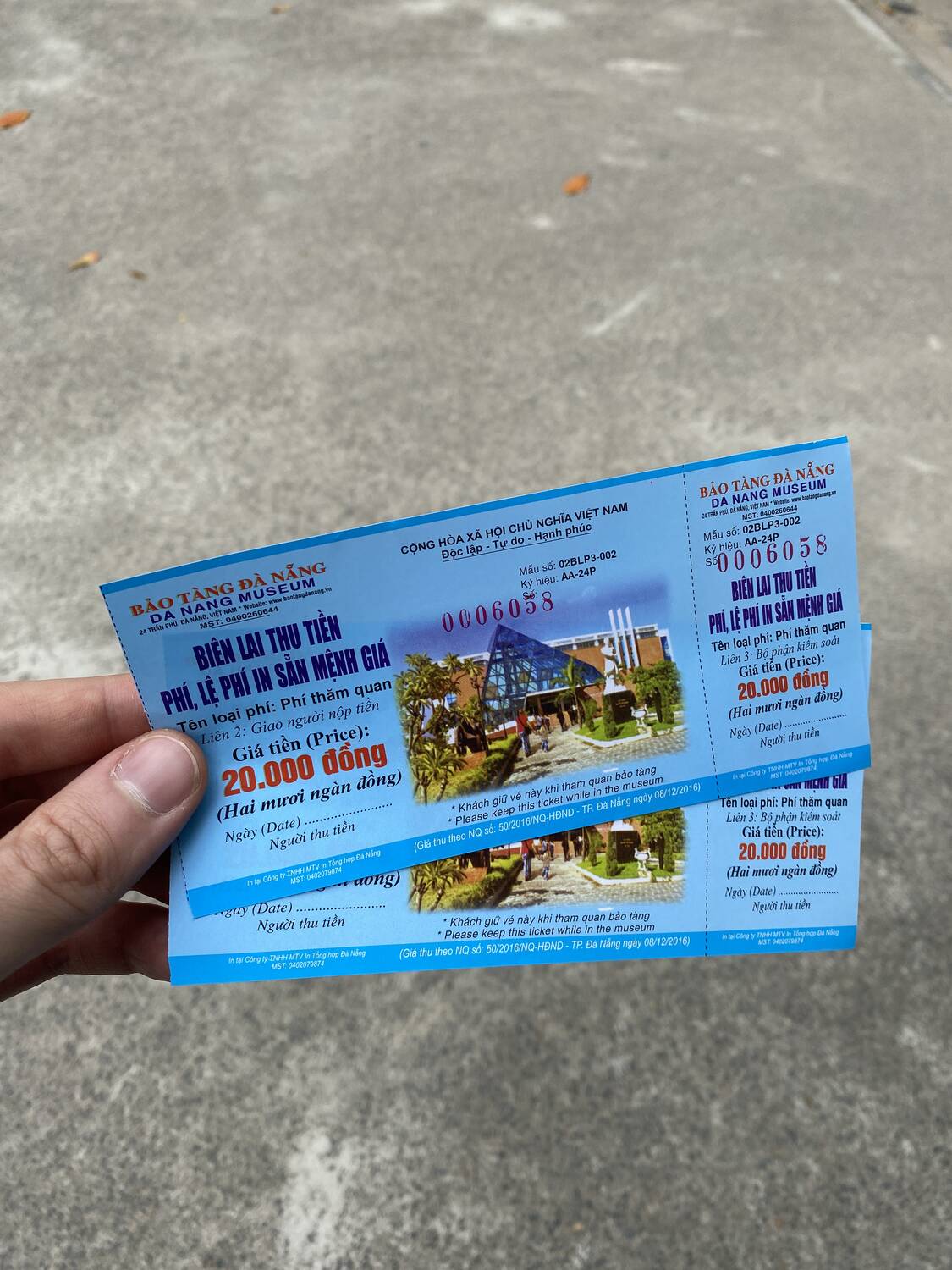
Is the Danang Museum Worth it?
Absolutely, the Da Nang Museum is great for anyone interested in understanding the history and cultural evolution of the city and its province.
I recommend going to the Museum of Cham Sculpture and An Long Temple before visiting the History Museum of Da Nang, which will last about 4 hours in total, and it’s great for a half-day plan.
Do You Need a Guide to Visit?
While the Da Nang Museum is designed to be self-exploratory, hiring a guide can make your experience better. I did not have a guide when I visited, as the signs are in English, but other visitors did.
How Long to Visit the Museum of Da Nang?
A visit to the Museum of Da Nang typically takes about 1 to 2 hours, which allows you to explore the main exhibits, read most signs inside full of history, and take photos on the way.
If you’re a history enthusiast or simply wish to take your time, you might spend a bit longer inside, but I found that 1 to 2 hours was enough.
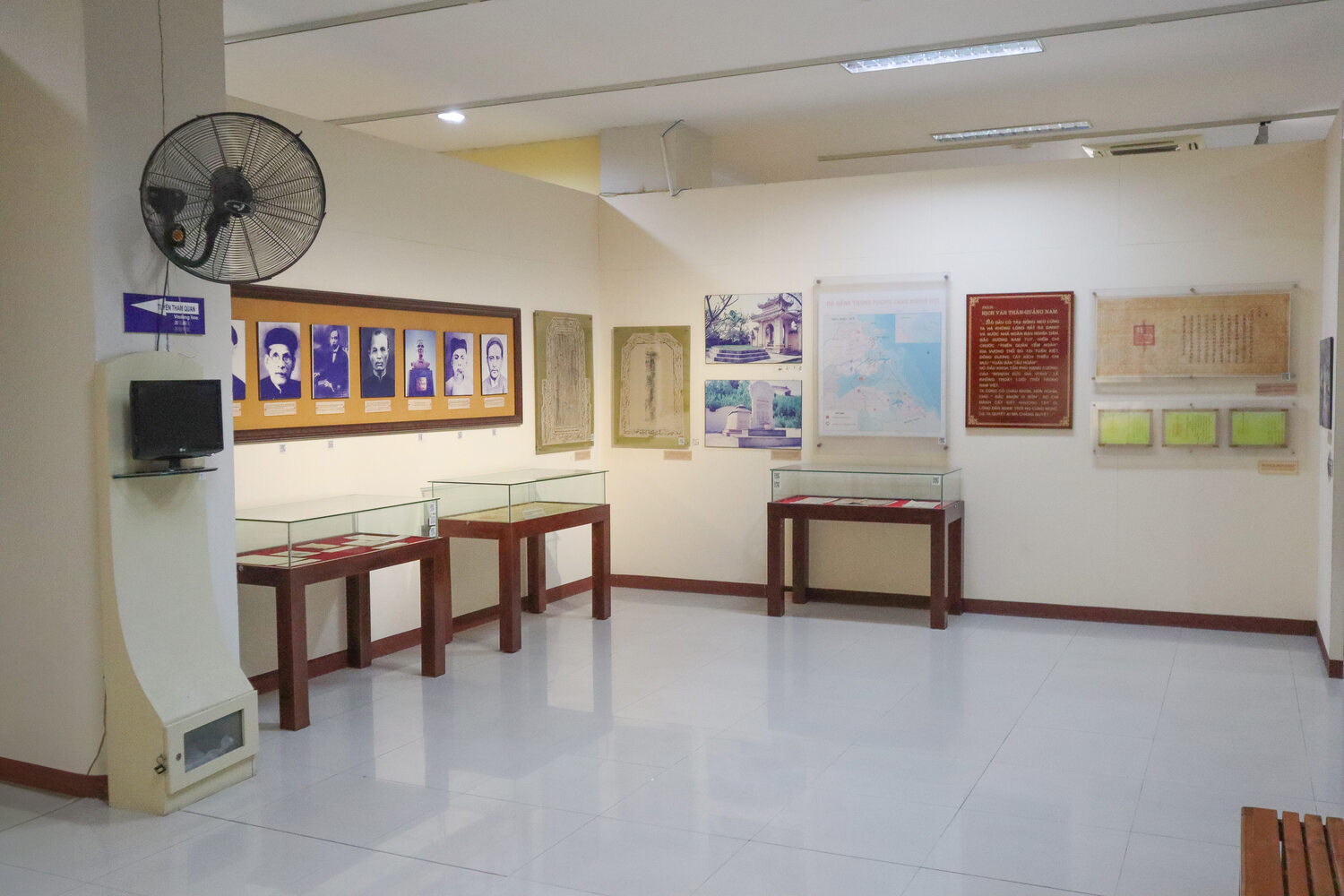
History of Da Nang Museum
The Da Nang Museum, initially opened on May 2nd, 1989, as the Quang Nam – Da Nang Provincial Museum, underwent reconstruction at a new site after Da Nang and Quang Nam provinces separated.
Following the administrative separation of Da Nang City from Quang Nam province, a decision was made to rebuild the museum at a new location in town.
The new project started in 2005, and the new museum, which we now know as Da Nang Museum, reopened on April 26th, 2011.
This museum was built within the historical confines of Dien Hai Citadel, and you can still see the walls when entering the complex, with historical war cannons and a U.S. Army helicopter near the entrance.
Today, the museum hosts a collection of over 2,500 documents, pictures, and artifacts, which all offer a comprehensive overview of the area’s rich heritage.
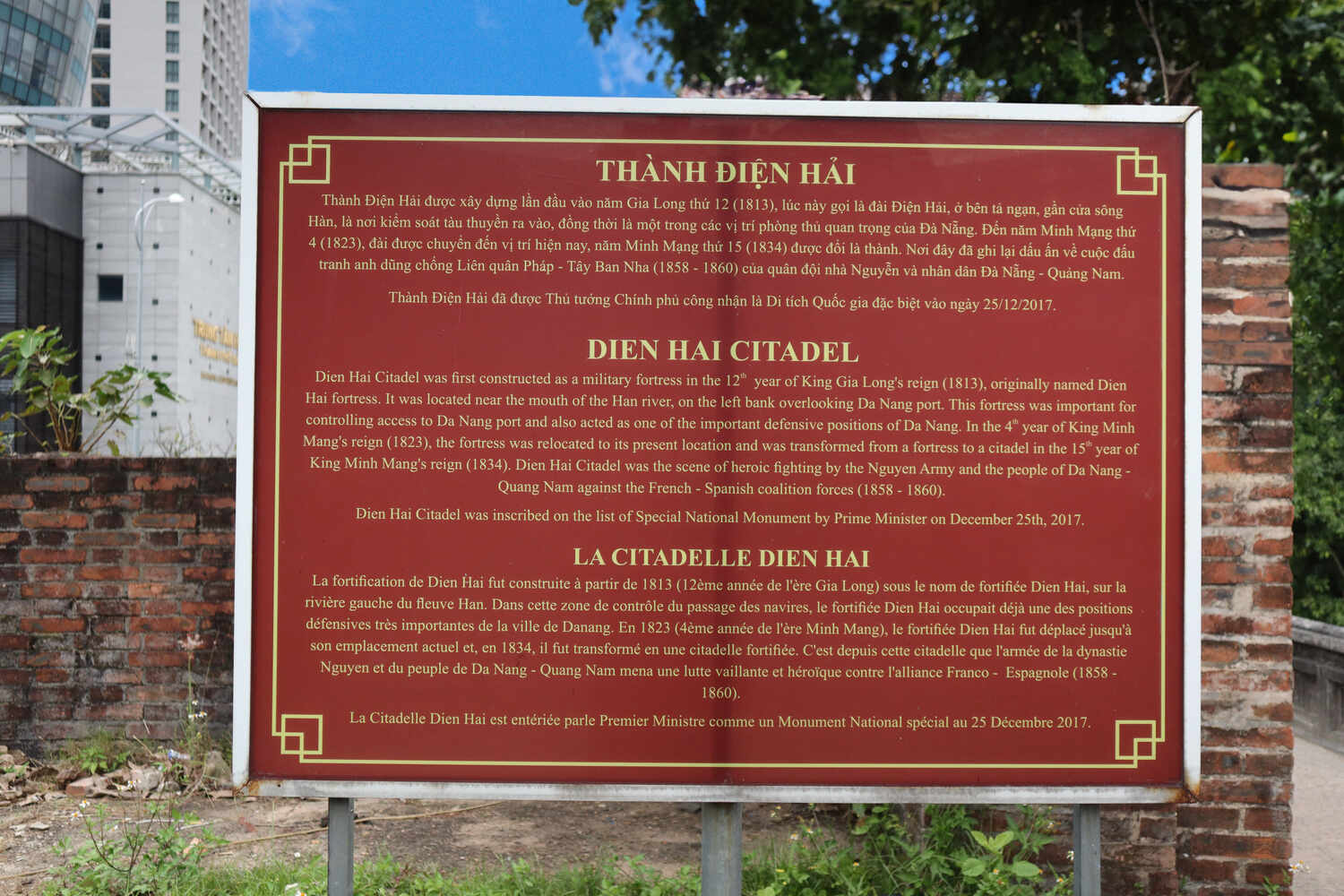
What to Expect at Da Nang Museum?
At the Da Nang Museum, visitors embark on a journey through the region’s history and cultural evolution across three distinct floors.
The ground level is dedicated to the life of local fishermen and farmers, illustrating the fundamental roles they play in Da Nang’s society.
The exhibition here focuses on their traditional practices, tools, and the connection they share with their surroundings, and you’ll have a nice glimpse into their daily routines.
Moving up to the second floor, the focus shifts to the Vietnam War era. This section presents a factual and educational recounting of the war’s effects on Da Nang and its people through artifacts, photographs, and narratives.
The top floor is all about the diverse aspects of life in Da Nang Province. It highlights the area’s festivals, customs, and the lively spirit of its communities.
Here below, I’ll go through each section in detail so you know what to expect on each floor.
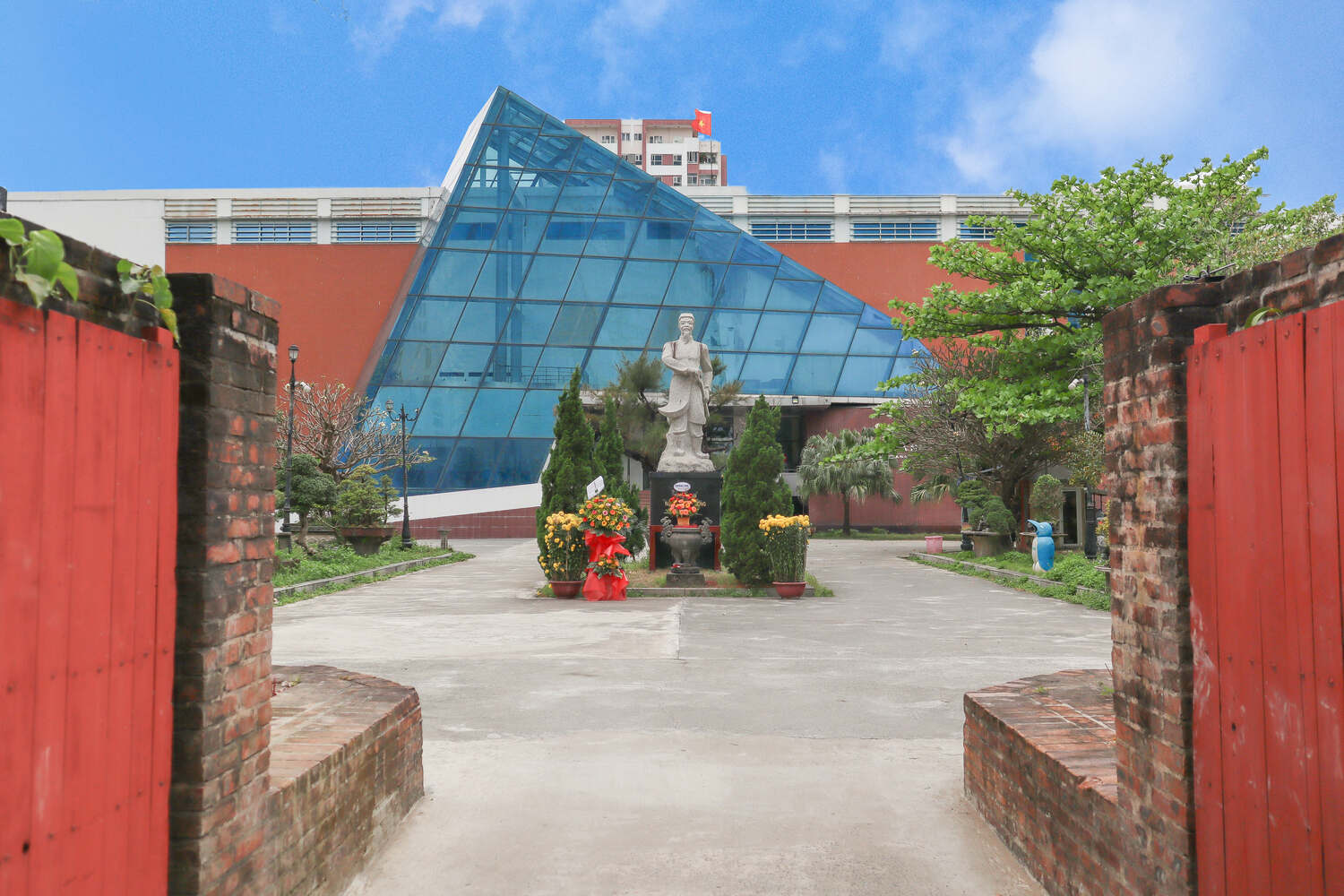
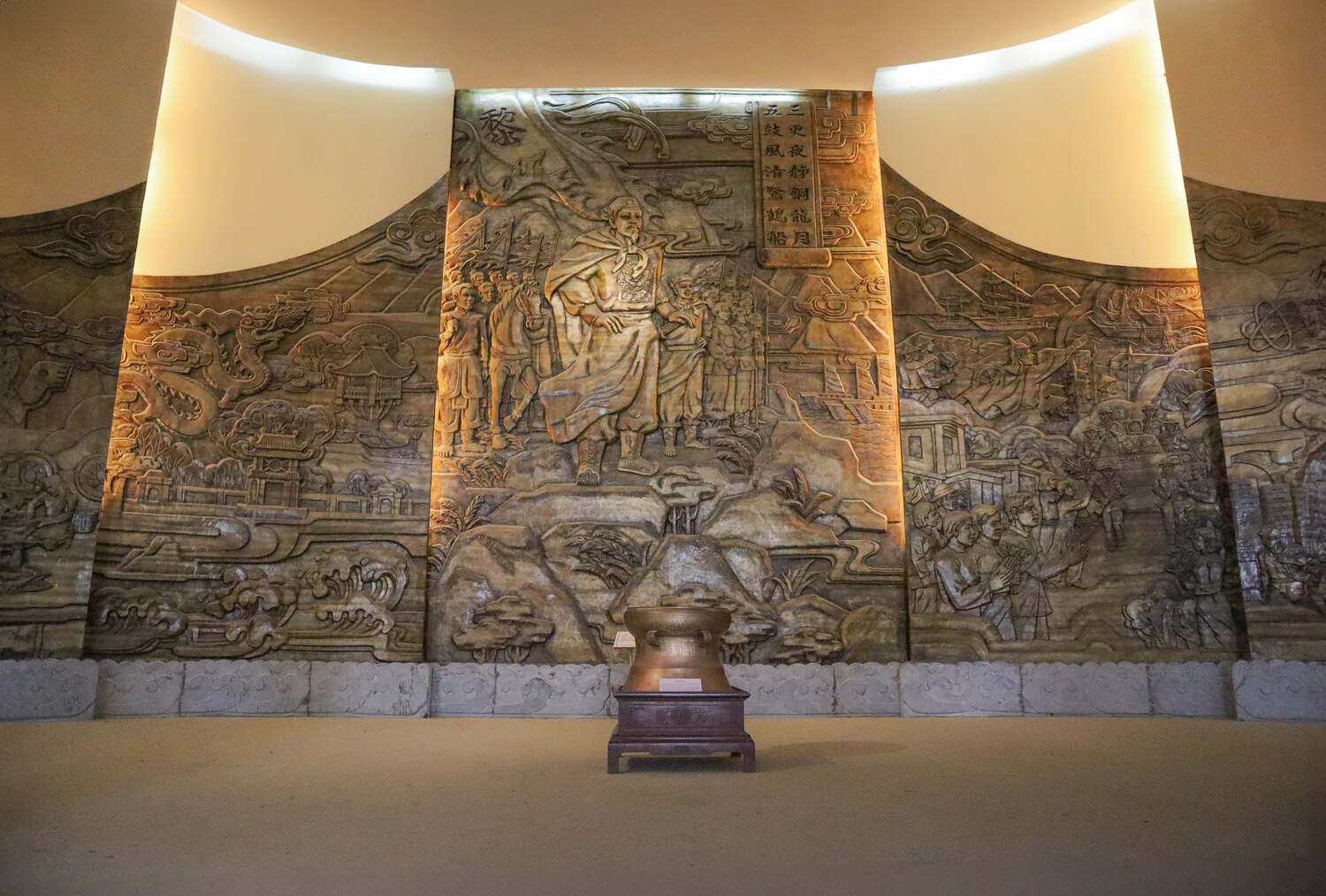
First Floor – Life of Local Fishermen and Farmers
The first level of the Da Nang Museum hosts a permanent exhibition dedicated to the roots of local life in Da Nang and its province, stretching from prehistoric times to the contemporary era.
You’ll find many exhibits that illustrate the rich natural conditions, geology, and resources unique to the region. The collection here is extensive, showcasing everything from the daily lives and tools of fishermen to the transformation of Da Nang before and after 1975.
This floor stands out for its detailed depiction of traditional Vietnamese agriculture and crafts. These include the making of Vietnamese rice paper, fish sauce, and Non Nuoc stone carvings (that you can also find at the Marble Mountains in Da Nang), which I found particularly interesting.
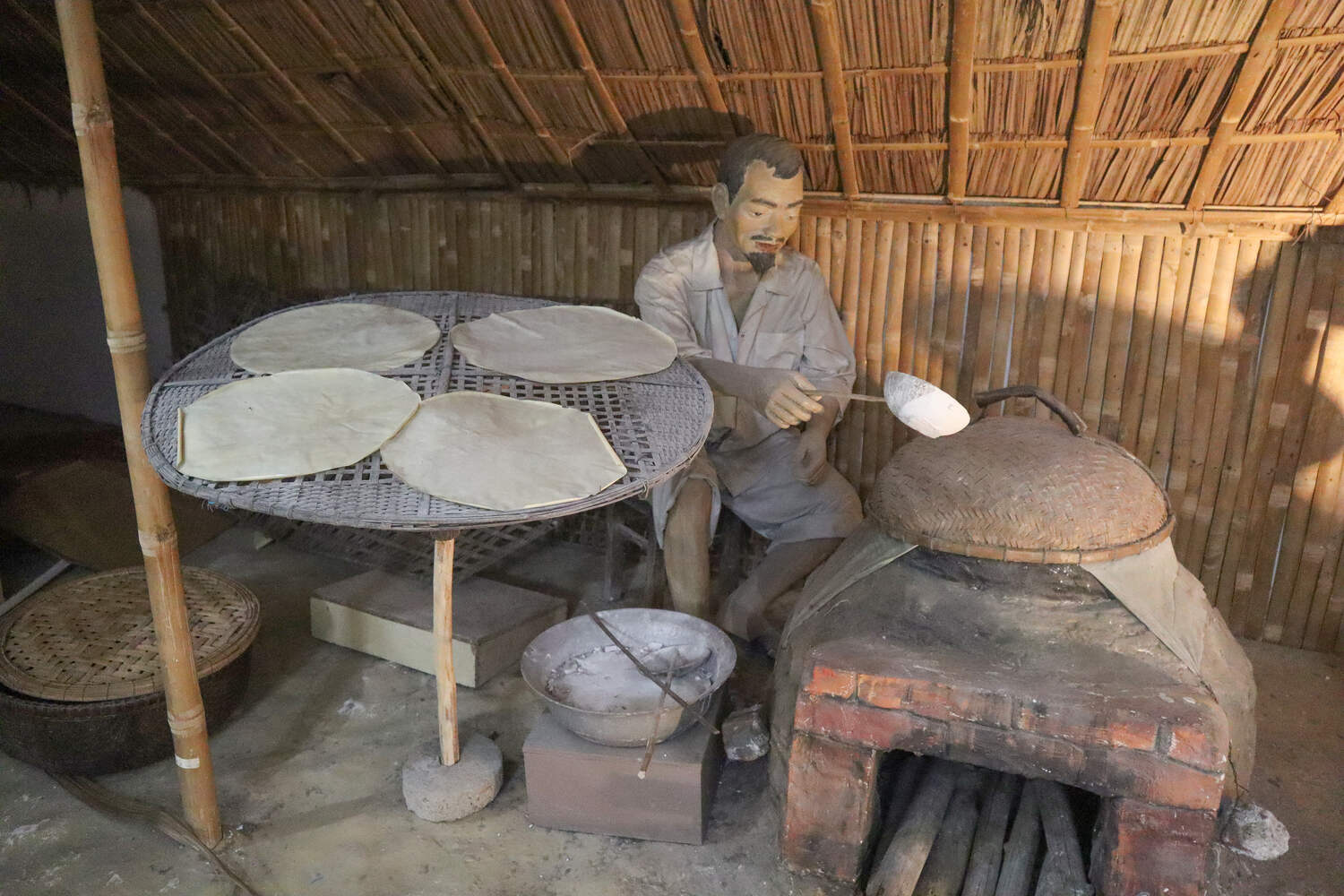
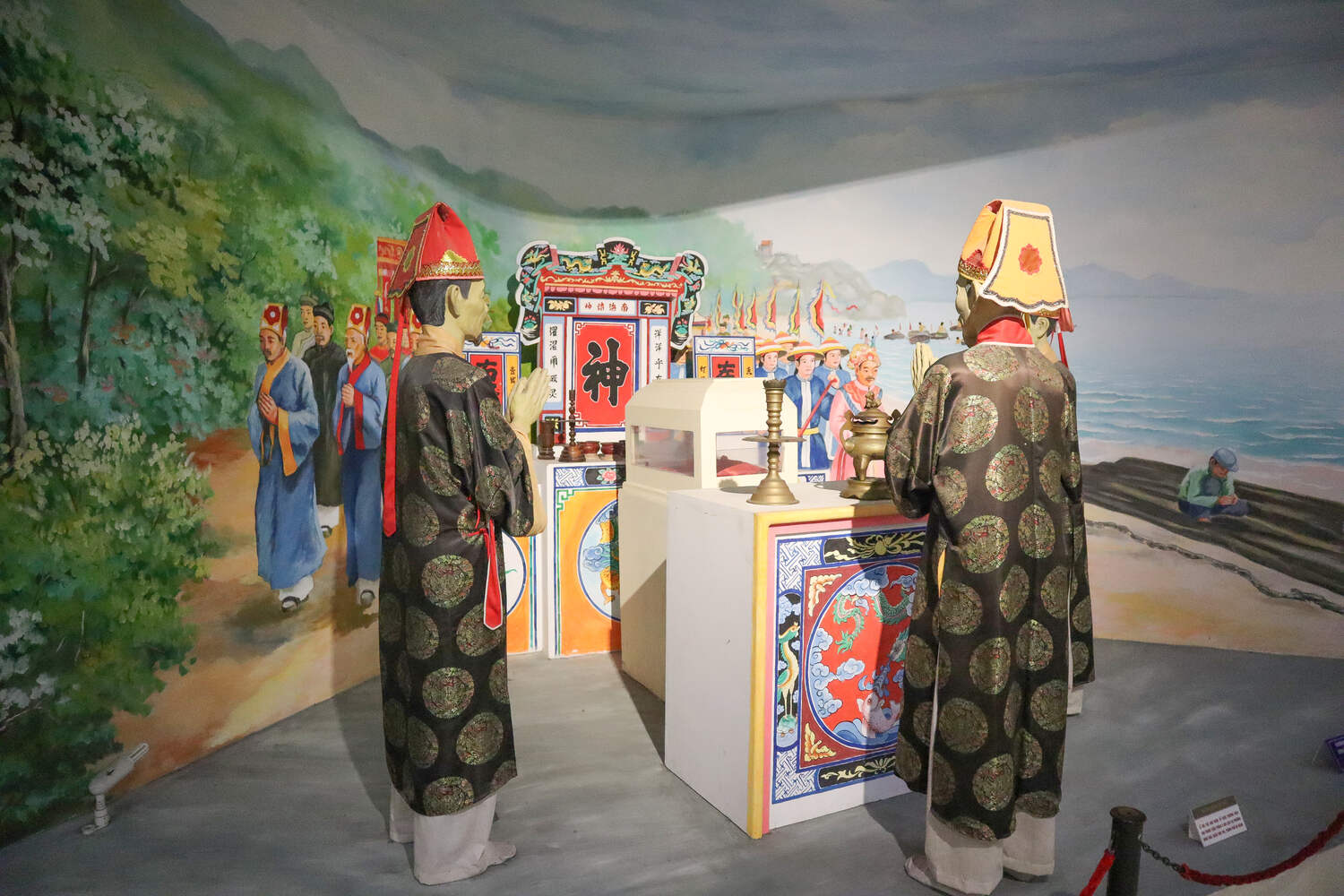
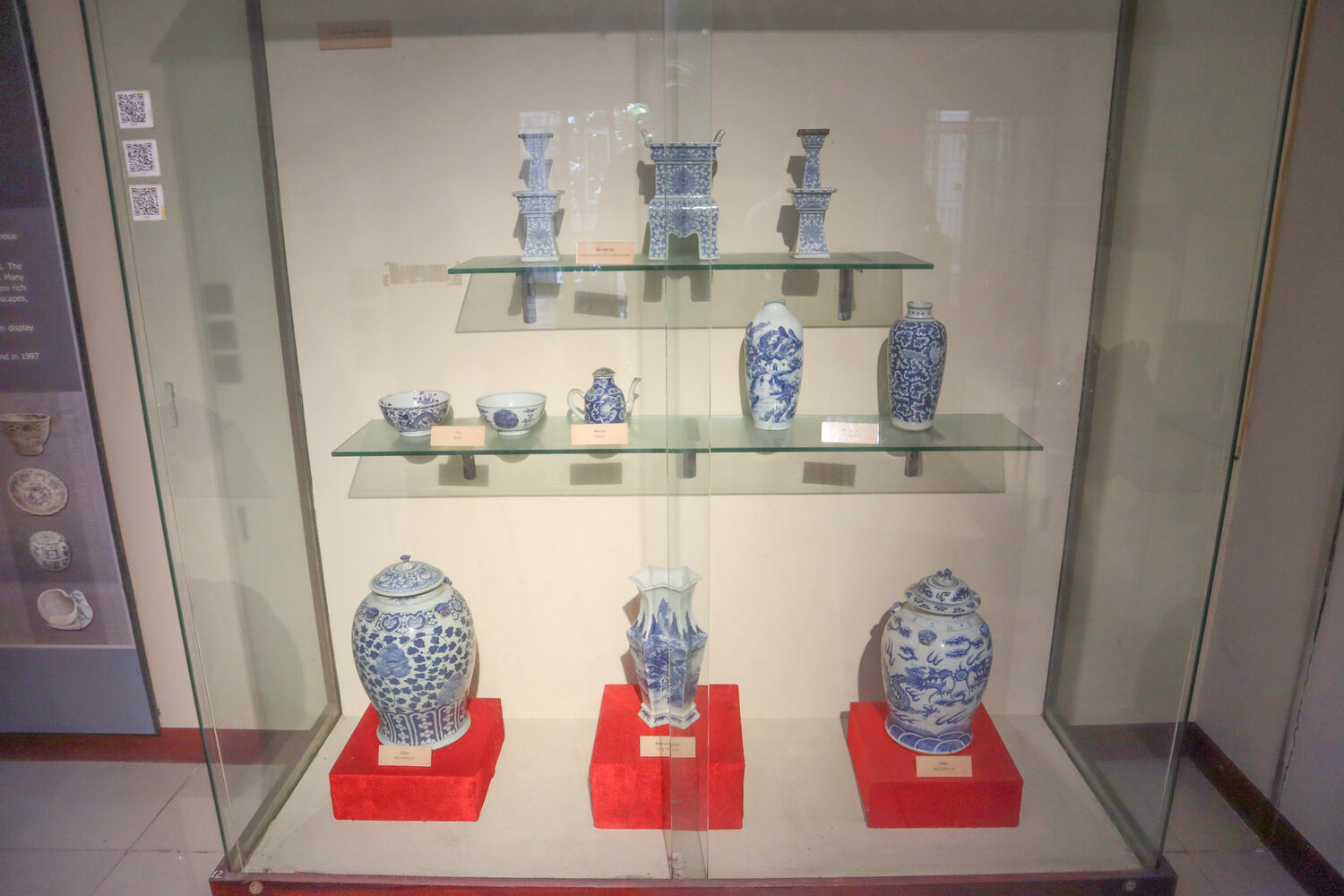
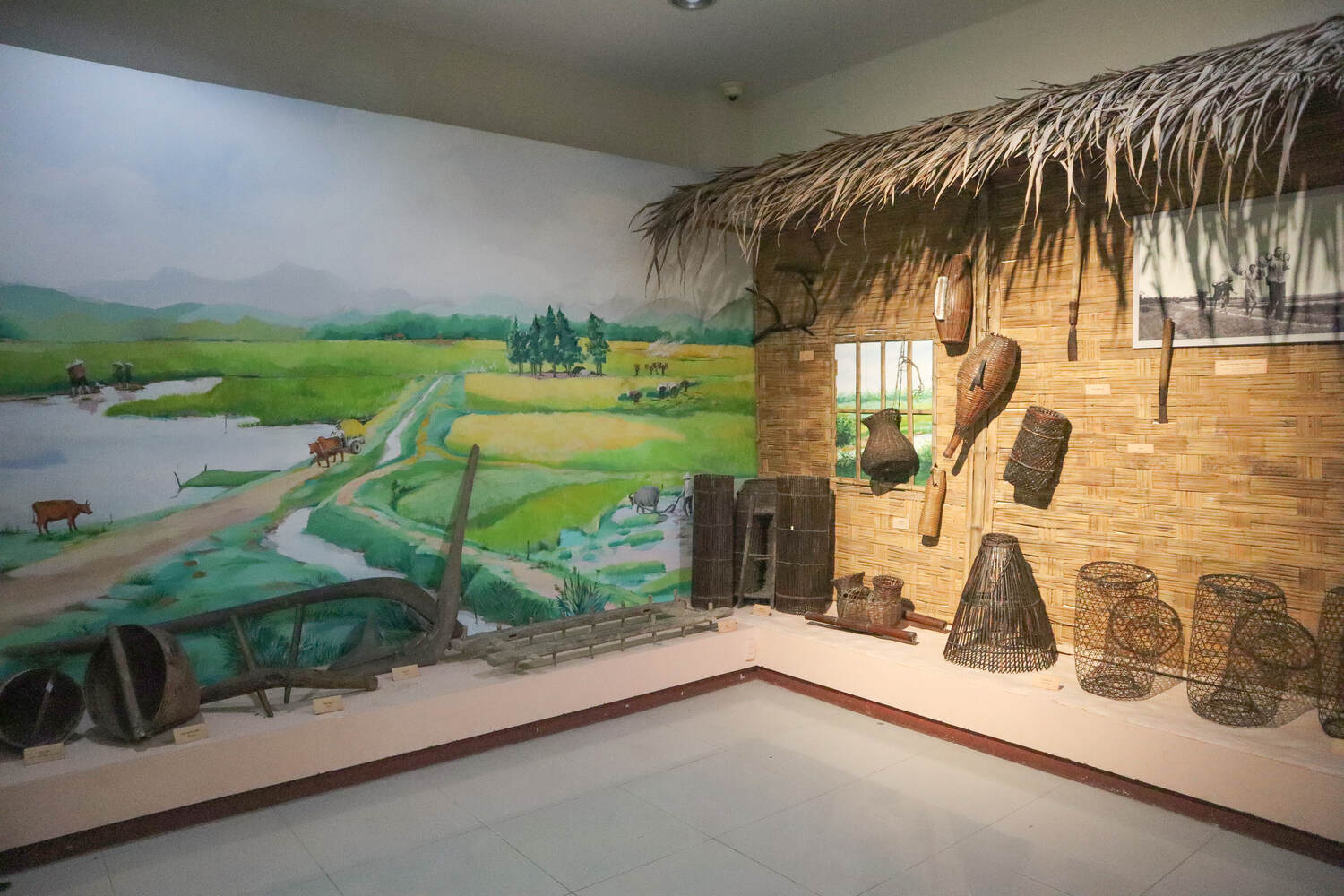
Second Floor – Exhibition about the Vietnam War
When you head to the second floor, you’ll get a better understanding of Da Nang’s history during the resistance war against the French and Americans.
With a collection that includes historical artifacts, photos and documents of patriotic movements, and Vietnam war remnants, you get a real sense of these challenging times.
It’s a sobering reminder of the struggles in Da Nang and Vietnam as a whole, and while it sad to read the facts and see the photos, it’s a part of Vietnam’s history that we can’t ignore. See the photos below for a better understanding.
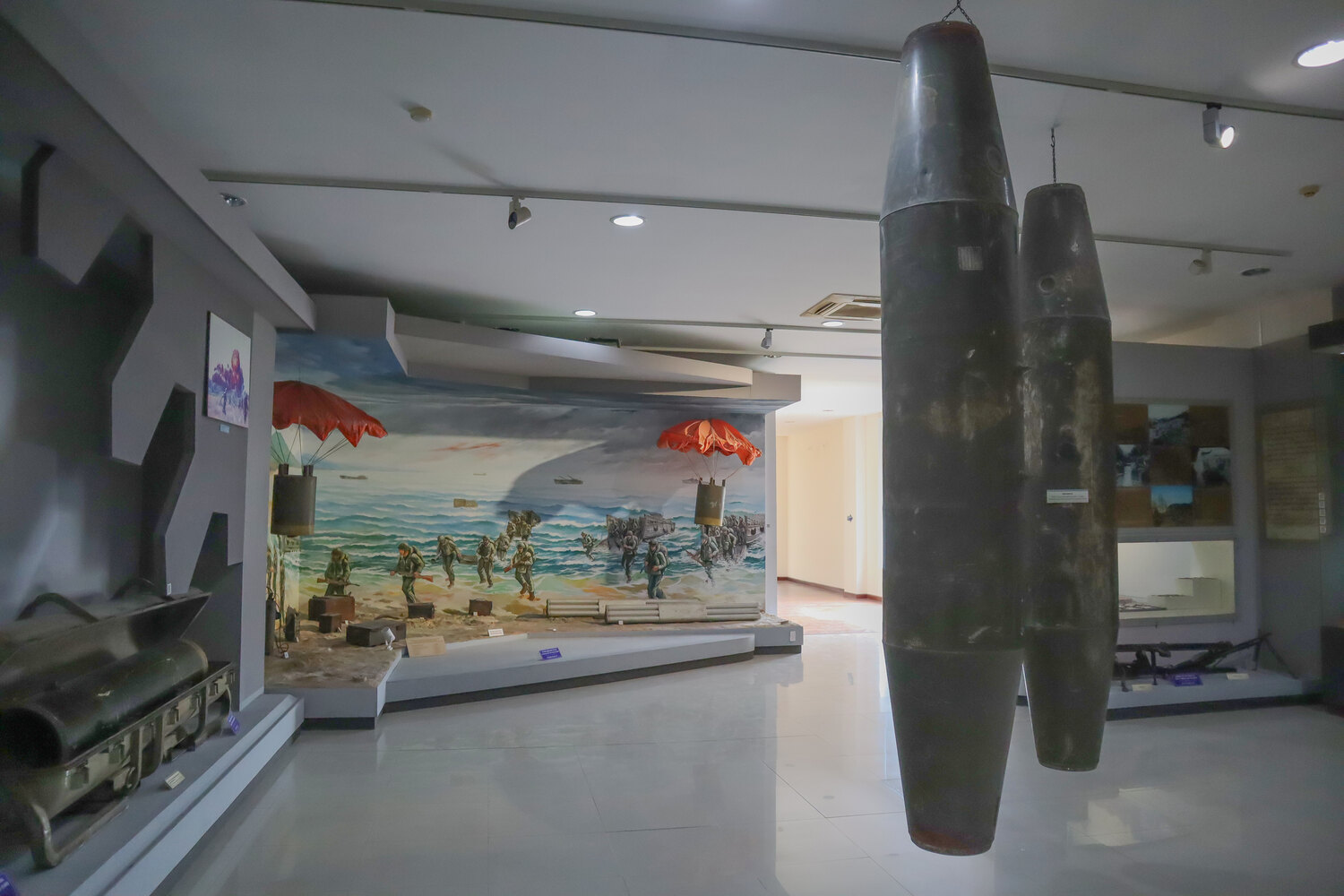
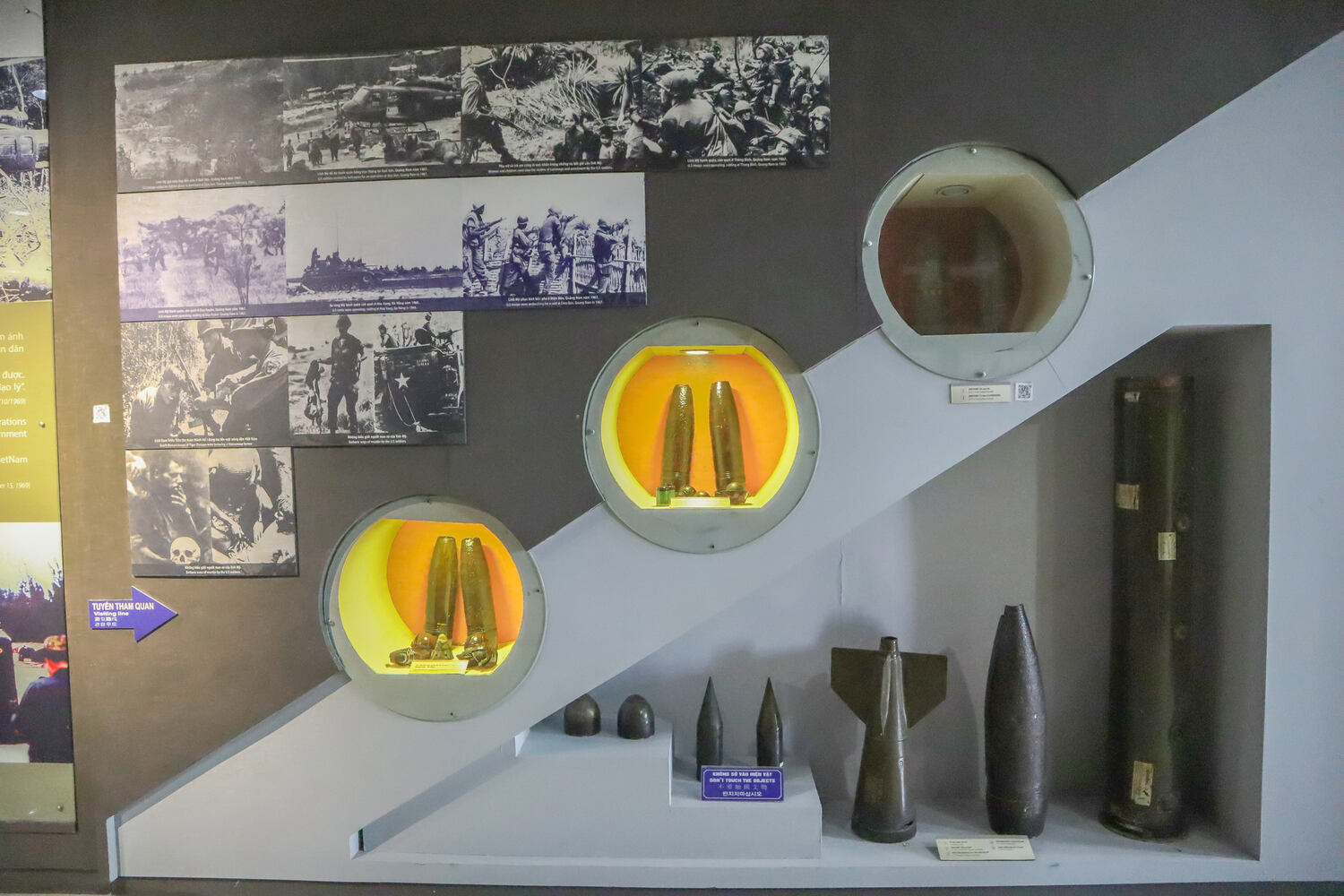
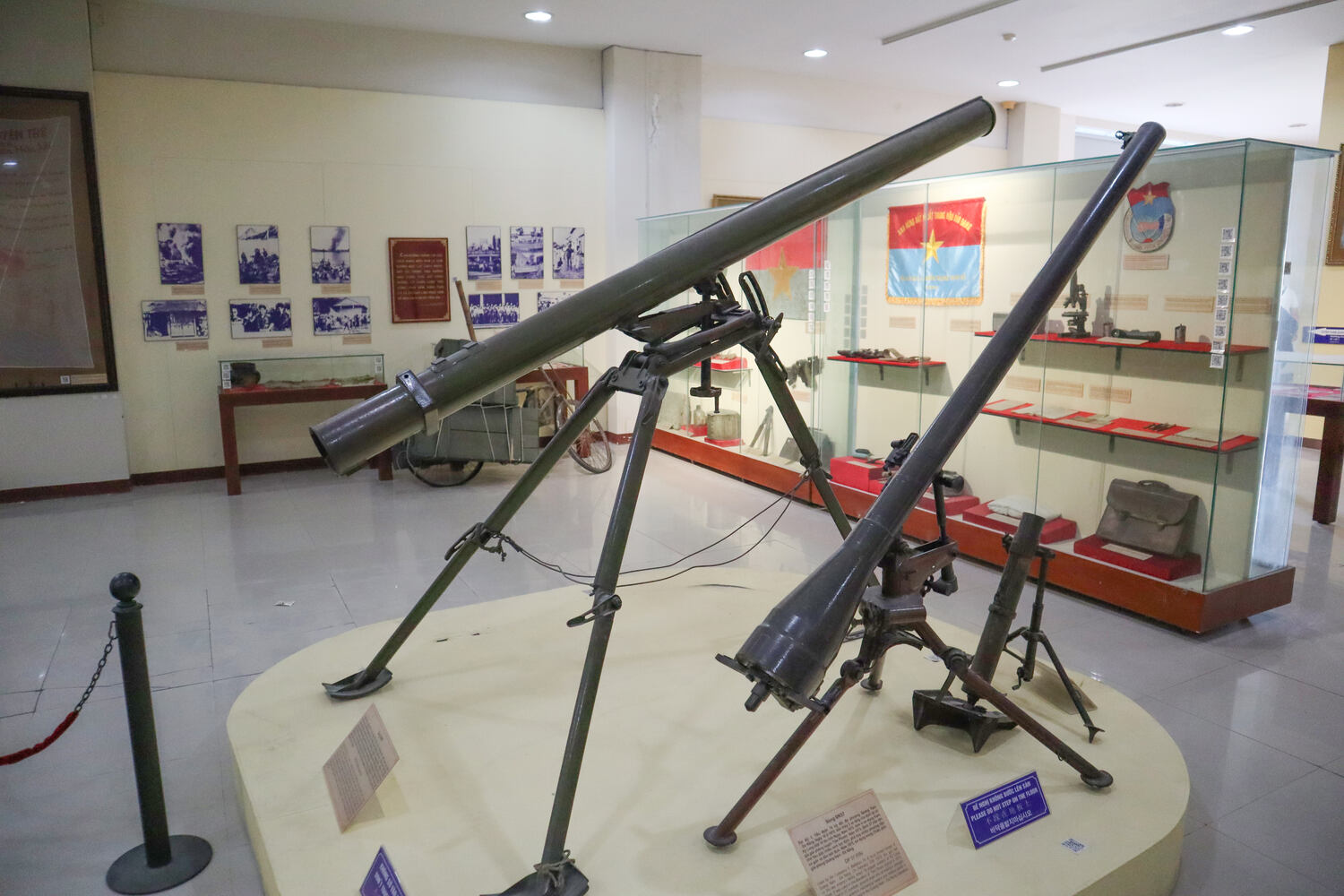
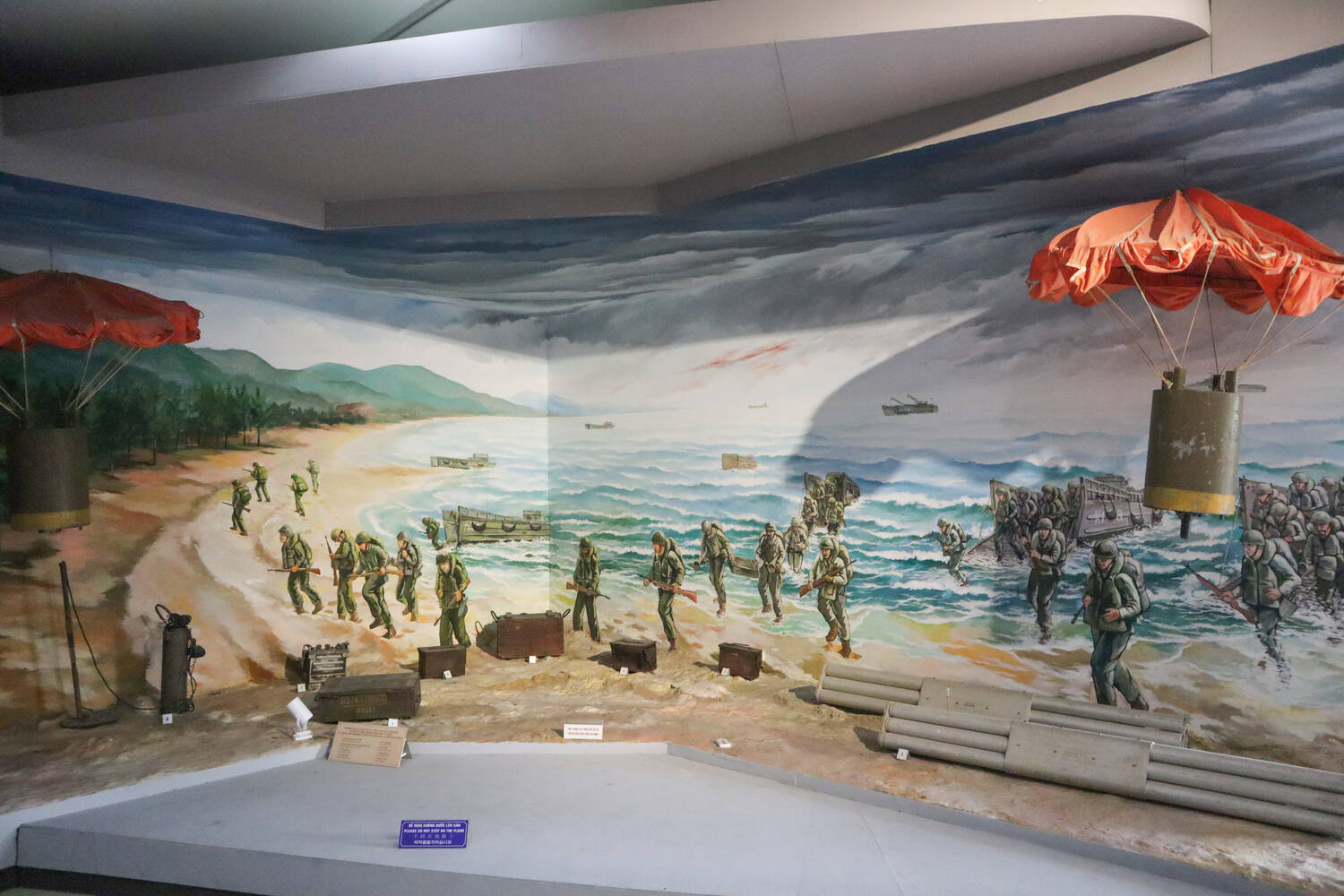
Third Floor – Local Life in Da Nang Province
On the third floor, you’ll see a vibrant showcase of Da Nang and Quang Nam’s ethnic diversity. Here, the exhibits show more of the region’s culture, with a collection of items related to the daily life of the local ethnic communities.
From traditional tools and clothing to jewelry and musical instruments, each piece gives you a chance to see what the lives of local Vietnamese people looks like.
There’s a traditional house as well as a medicine store, and they perfectly represent what life in the rural areas looks like. I read online that there used to be a 30-minute documentary about Da Nang but I didn’t see it when coming.
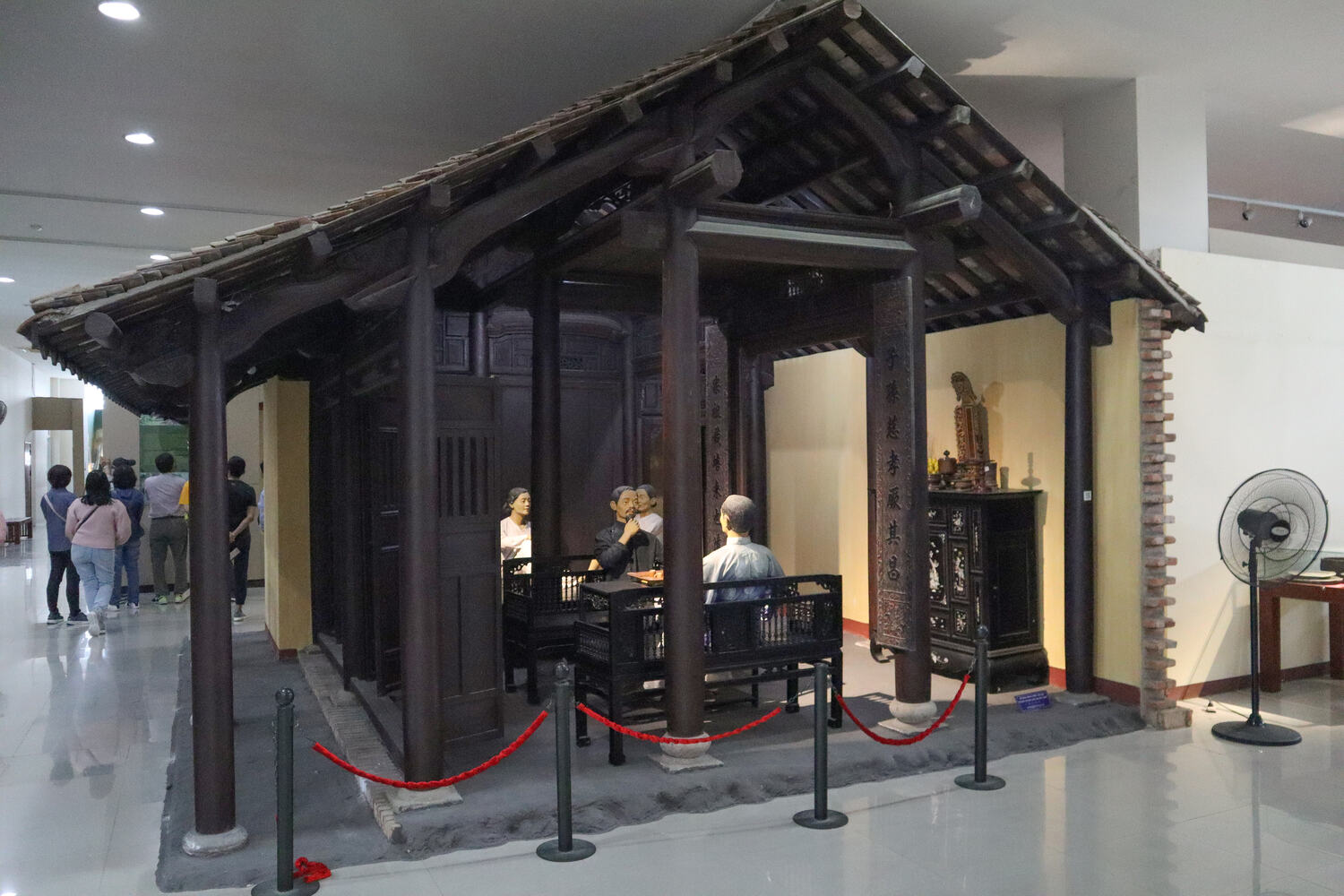
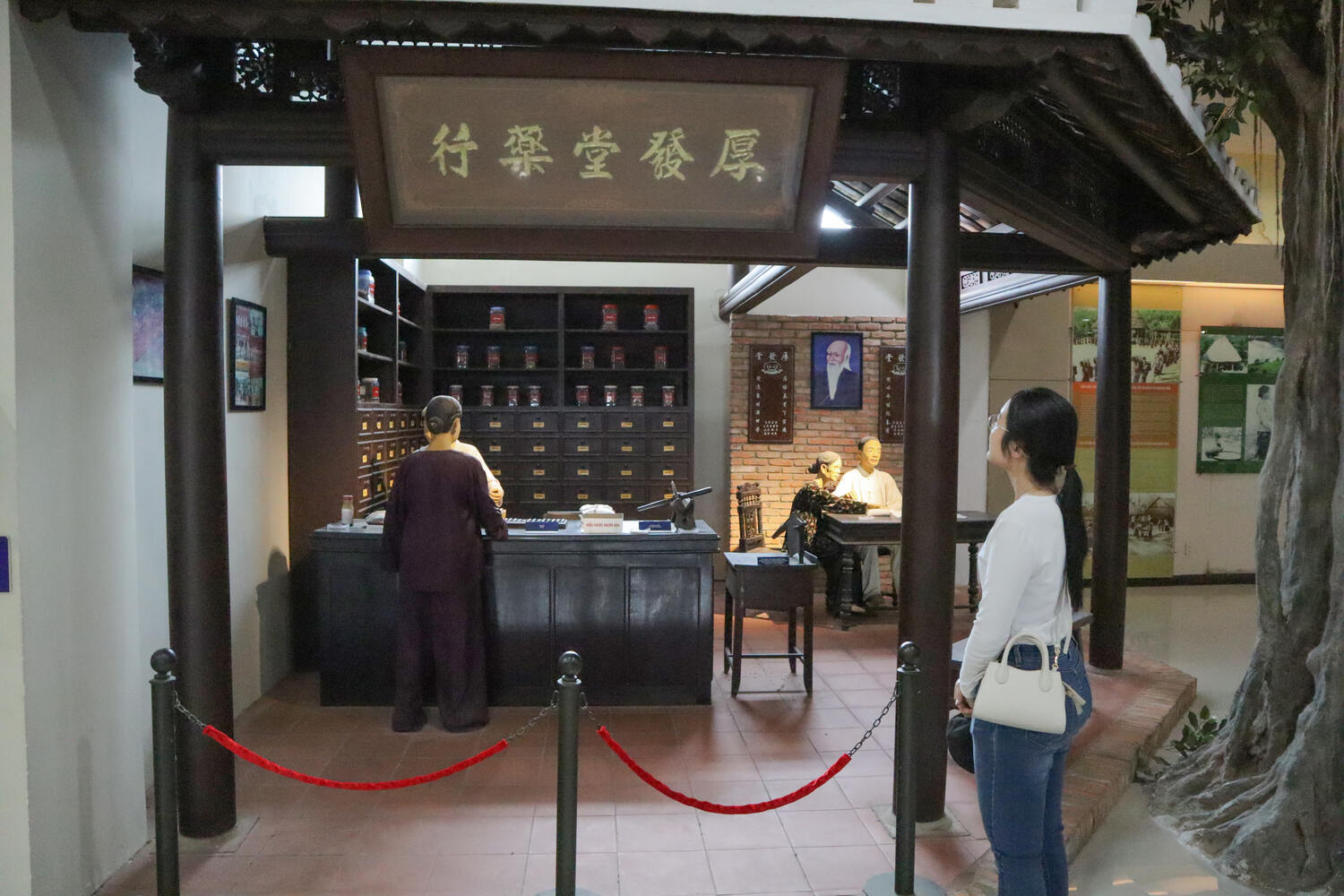
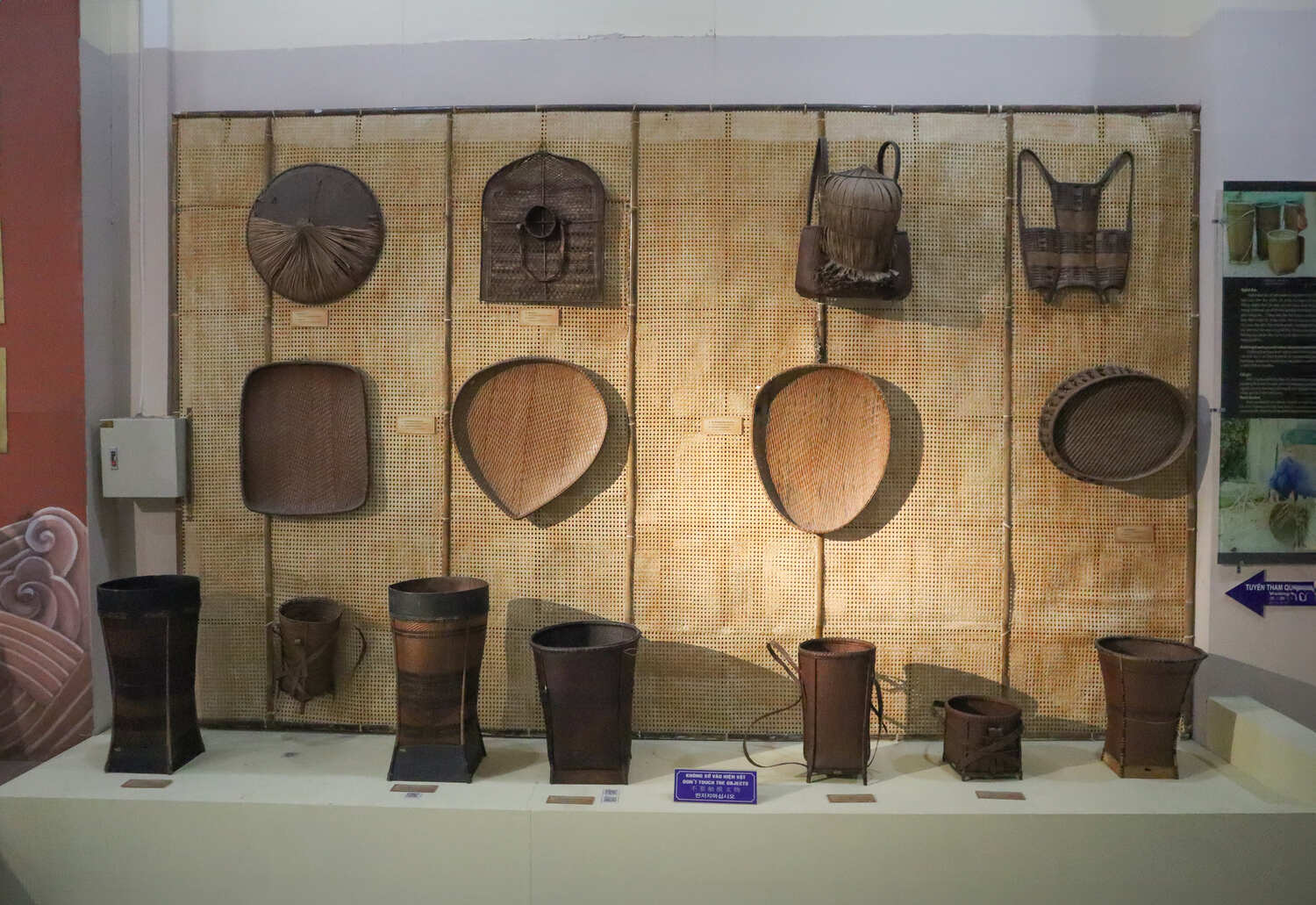
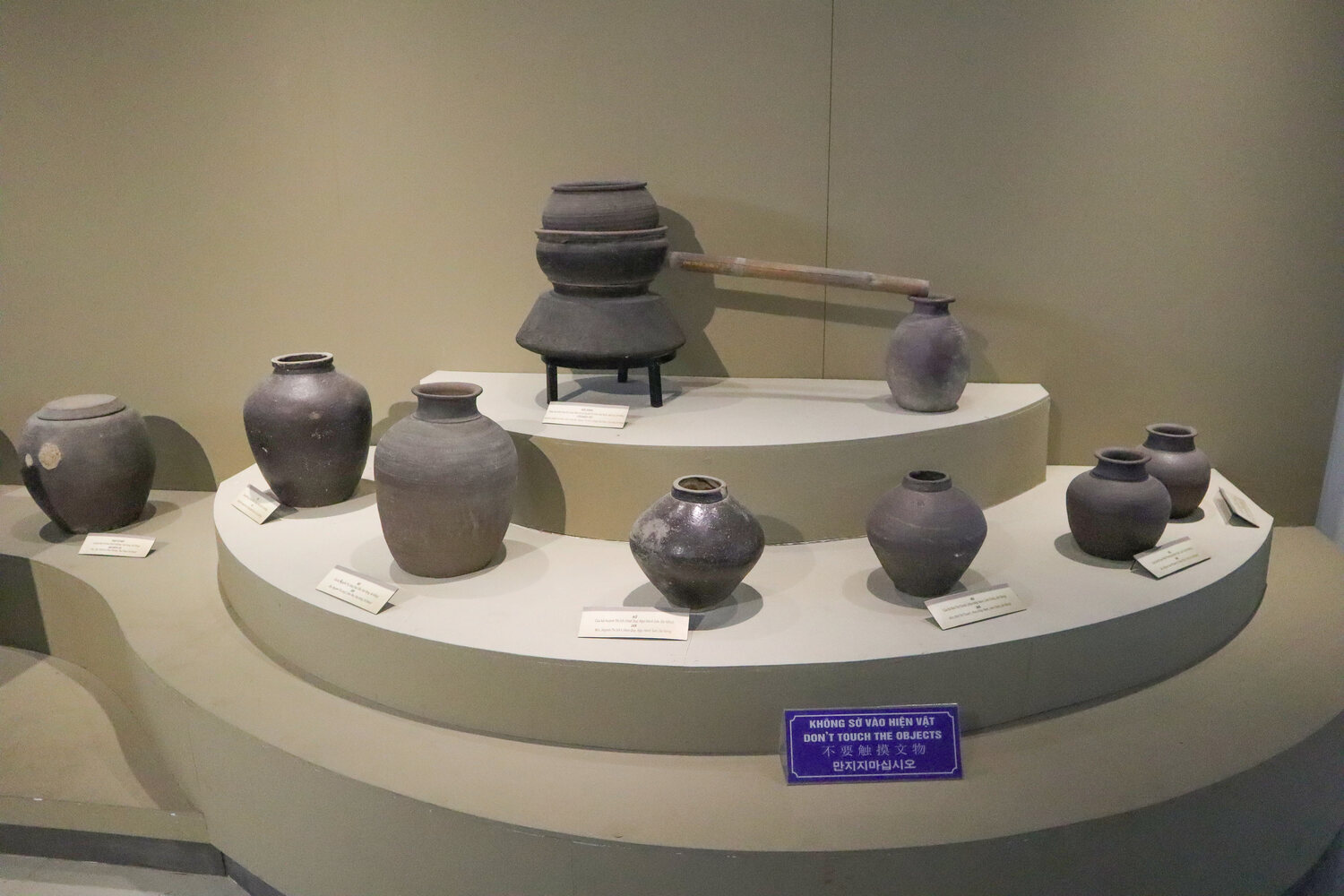
Tourist Attractions Near Da Nang Museum
While visiting this and other Da Nang museums, there are other tourist attractions that you don’t want to miss. Here are some interesting places that I recommend visiting, which are all within walking distance.
Cham Sculpture Museum
Another art museum to learn about Vietnam’s history at The Cham Museum, one of the first and most famous museums built by the French in the country, in 1915.
The museum houses a large collection of around 400 Cham artifacts, including sculptures and ceramics made of sandstone, terracotta, and metal. The exhibits provide a fascinating glimpse into the history and culture of the Cham people, who once controlled much of what is now Central Vietnam.
The Cham people lived in this part of Vietnam in the 11th century, and built stunning structures all around Vietnam, such as the My Son Sanctuary, which is now a UNESCO World Heritage Site.

An Long Temple
An Long Temple, located a short walk from the Cham Museum in Da Nang, is a gem that not many tourists visit, but you shouldn’t miss it.
The temple’s architecture and decorative elements are a feast for the eyes, and you can see traditional Vietnamese architecture at its best. Despite its relatively small size, An Long Temple is well worth a visit for those looking to immerse themselves in local culture and spirituality.
It’s perfect for a short stop, especially if you’re exploring the area around the Cham Museum.
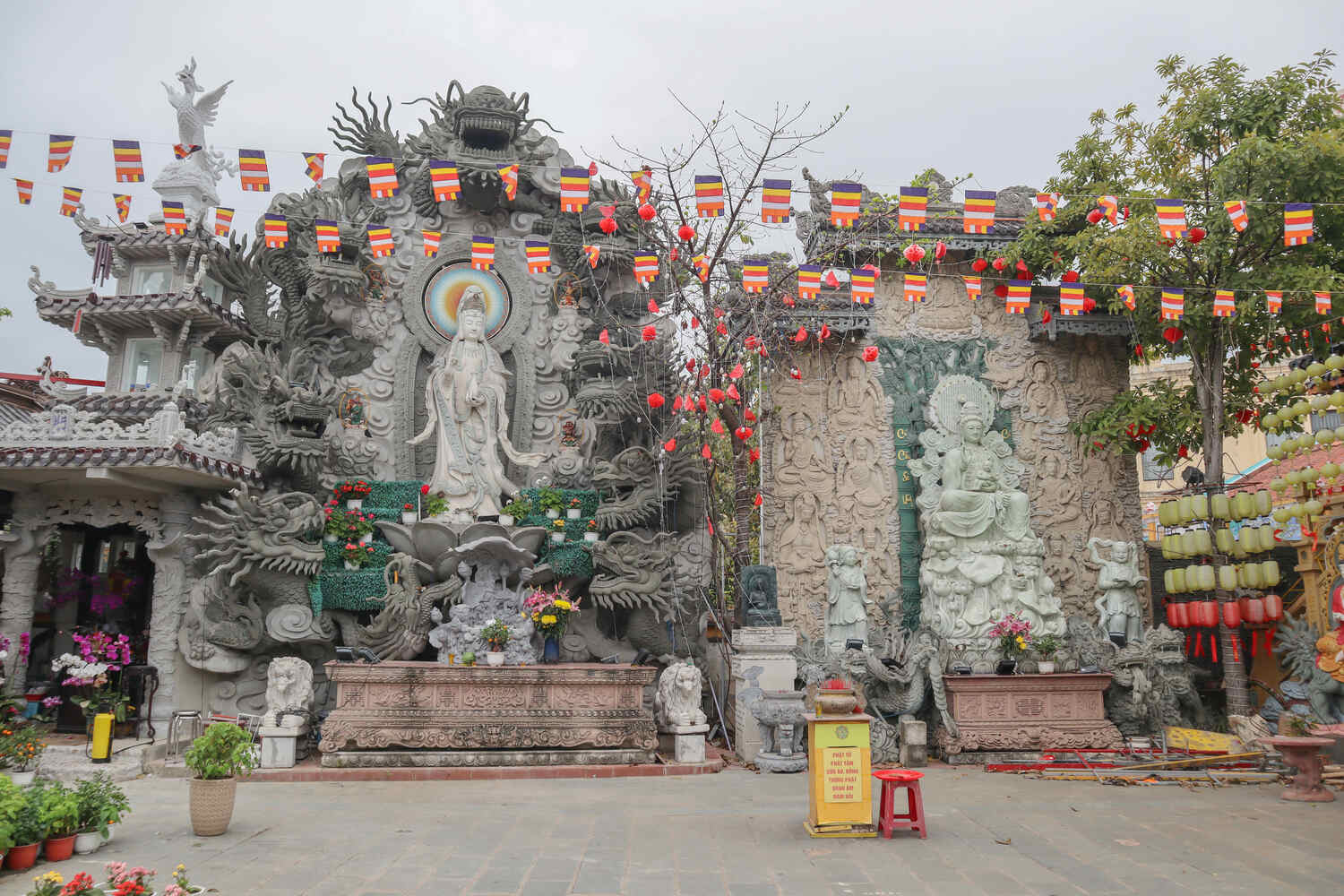
The Han Market
If you’re looking for a truly authentic Vietnamese market experience, the Han Market in the city of Da Nang is the place for you. With endless stalls, this sprawling market is full of vendors selling everything from produce and street food to clothing and housewares.
The market can be overwhelming at first, but it’s worth taking the time to explore all the different stalls and see what they have to offer.
You’re sure to find some unique items that you won’t find anywhere else. And if you get hungry, there are plenty of vendors offering delicious street food to enjoy.
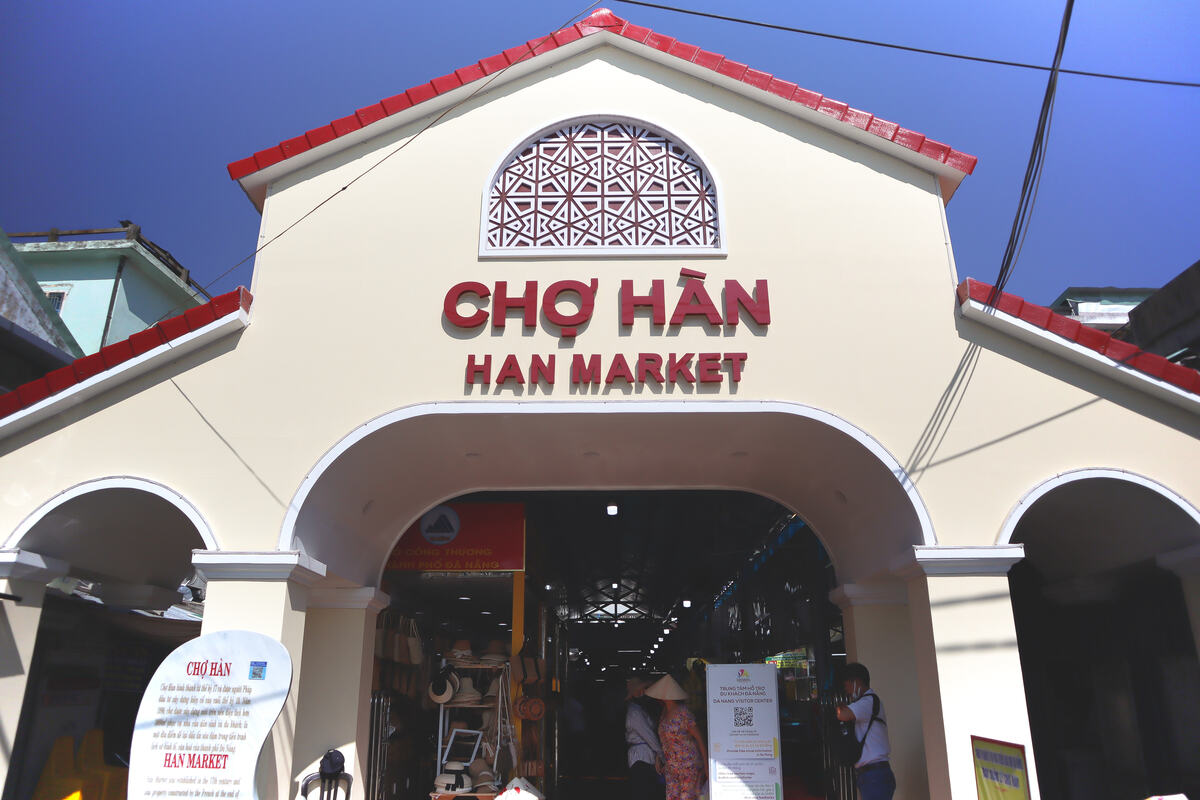
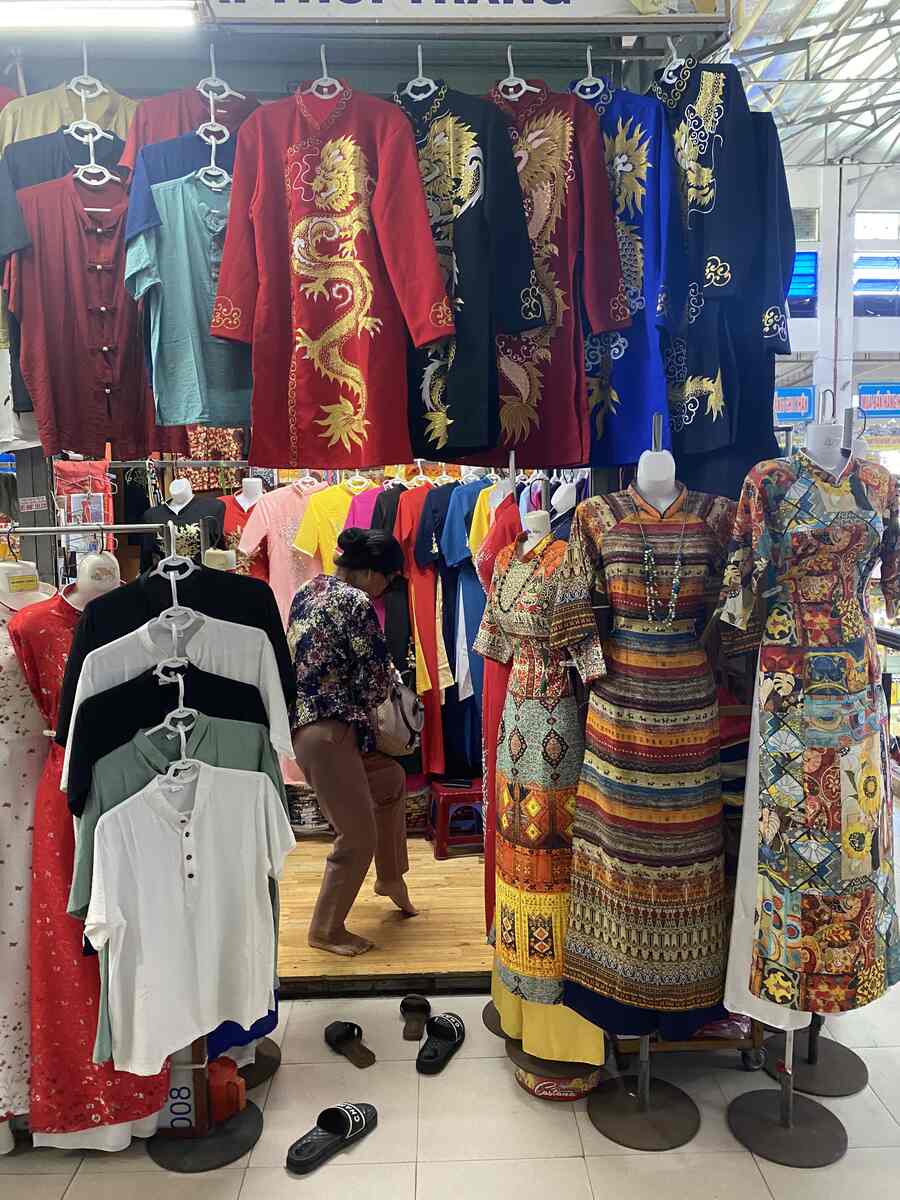
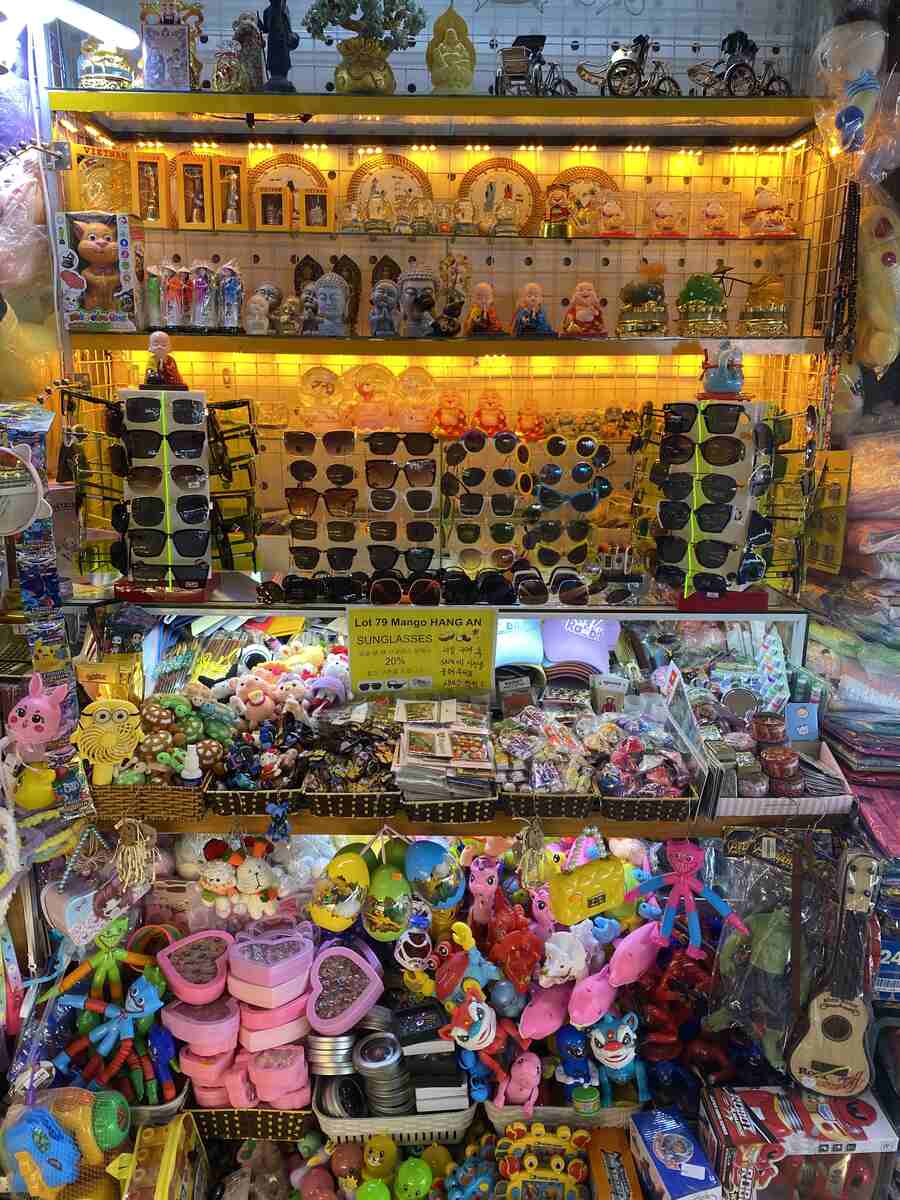
Da Nang Fresco Village
The Da Nang Fresco Village is a small local neighborhood with narrow streets, and it’s home to an open-air gallery, just 10 minutes or so away from Da Nang Museum.
While the village is more of a casual detour than a destination, it’s an opportunity to see the creative side of Da Nang. The art covers various themes and styles, turning the walls into canvases that speak to both residents and visitors.
Although the alleys are tight, sometimes bringing you close to private homes, the experience is one of quiet beauty and a peek into the daily lives of the locals.
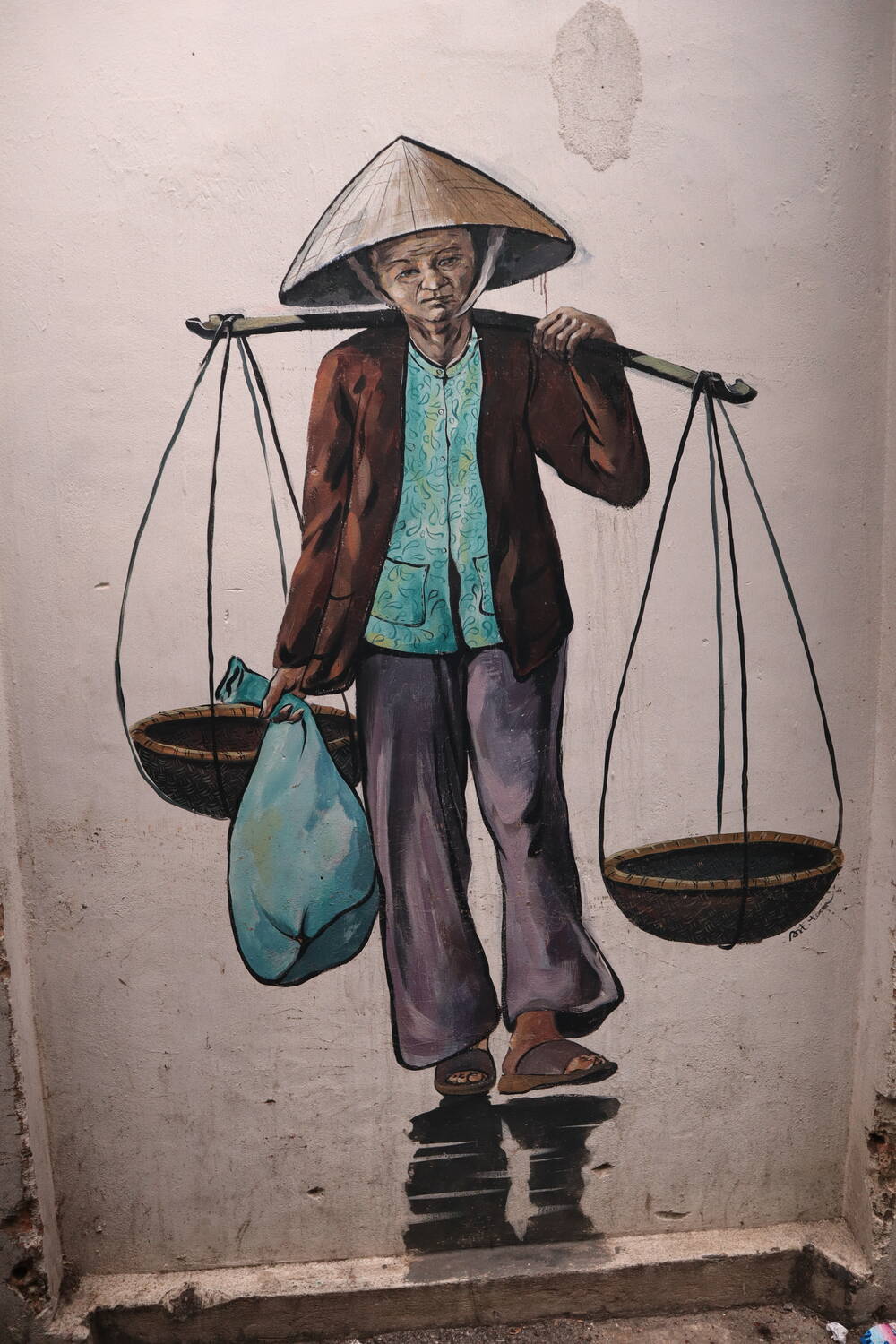
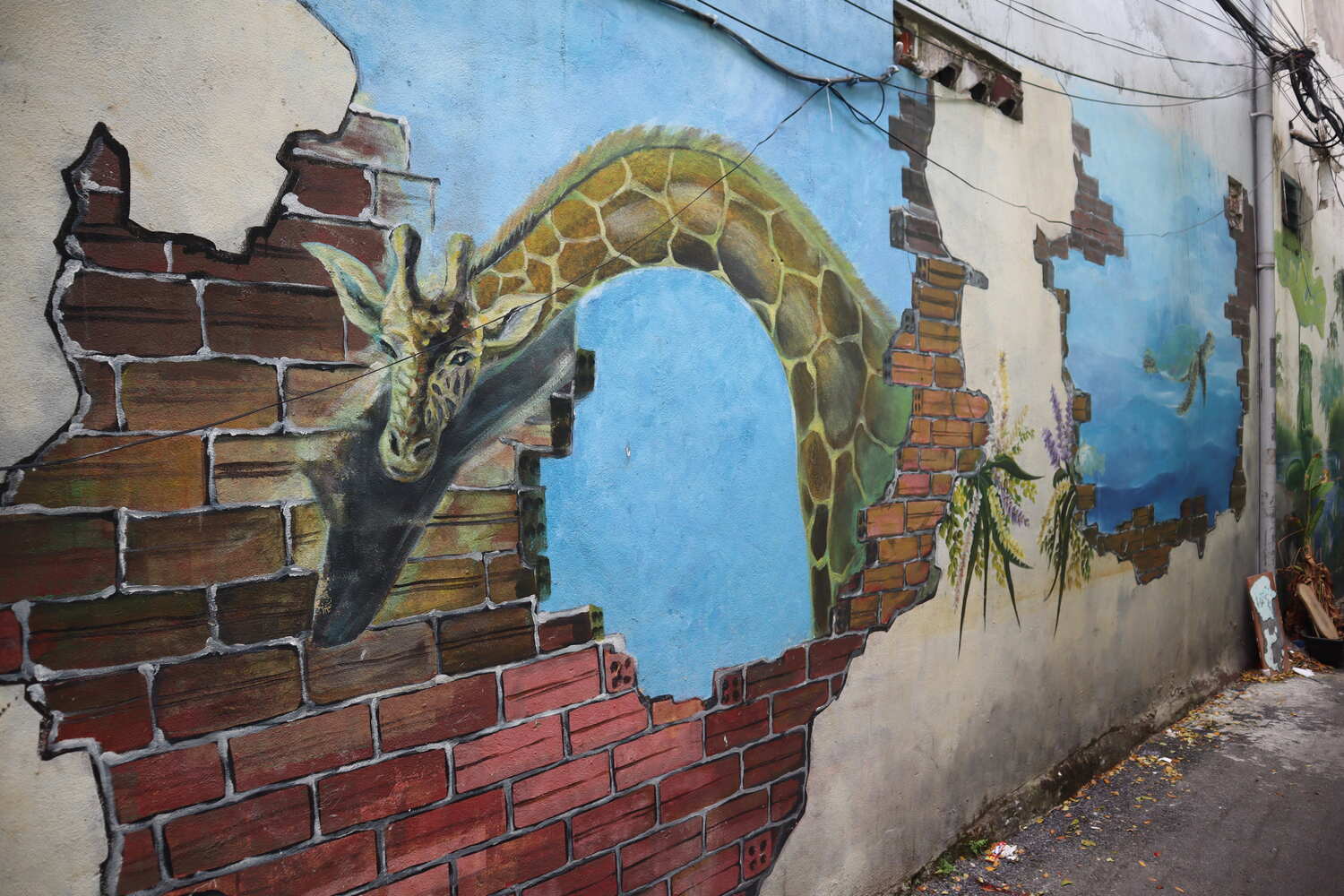
Final Thoughts – Da Nang Museum
As you conclude your visit to the Da Nang Museum, you leave with a deeper appreciation for the diversity and beauty of Da Nang and its surrounding areas.
I spent about 2 hours inside and genuinely liked it, and it’s nice to have a history lesson with real historical artifacts and signs in English!
Thanks for reading until the end and I hope this guide was helpful to plan your visit.



